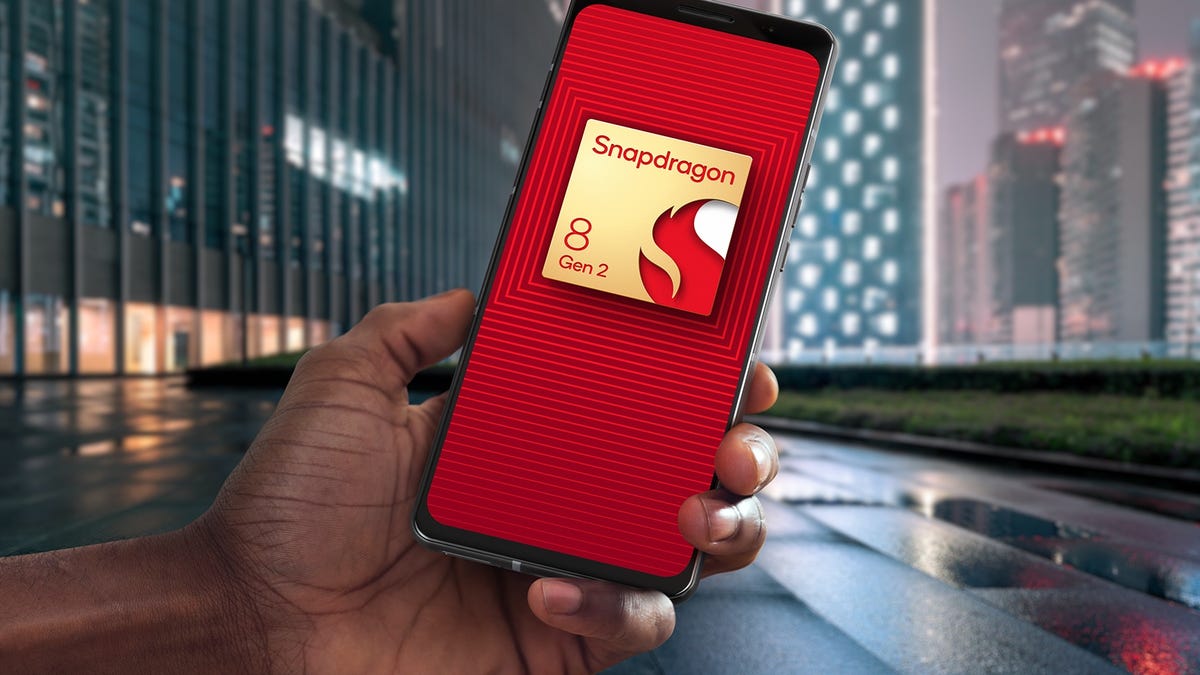Qualcomm's Next Top-Tier Android Chip Adds Ray Tracing, Wi-Fi 7 Connectivity
The Snapdragon 8 Gen 2 packs better AI and more true-to-life graphics for next year's flagship Android phones.

Qualcomm's next high-end mobile chipset, the Snapdragon 8 Gen 2, features performance improvements, better AI, hardware ray tracing and support for Wi-Fi 7.
Next year's top-of-the-line Android phones will feature smarter AI, offer better power efficiency, bake in ray tracing and connect to next-gen home Wi-Fi, thanks to the new premium chipset that Qualcomm revealed Tuesday at its annual Snapdragon Summit.
The new Snapdragon 8 Gen 2 chipset is faster and more efficient than its predecessors, the Snapdragon 8 Gen 1 and 8 Gen 1 Plus. Qualcomm's top-tier chips power the priciest Android phones that compete with Apple's iPhones. The first phones sporting the Snapdragon 8 Gen 2 are expected to launch by the end of 2022.
Phones using the new silicon will come from brands like OnePlus, Asus, Vivo and Oppo, though Qualcomm hasn't revealed specific models yet.
Pointedly missing from this list is Samsung, which typically includes the latest premium Snapdragon chipset in its flagship S-series handsets that launch early each year. We'd expect the upcoming Samsung Galaxy S23 to include the Snapdragon 8 Gen 2, but there's always a chance -- however slim -- that Samsung will buck tradition and go with a different chipset.
Read more: Samsung Galaxy S23: The Biggest Features I Want to See
In addition to better performance, phones with the new chipset will offer improved AI that can, for example, more accurately spotlight you against your blurred Zoom background. Qualcomm also promises more vibrant photos as the AI breaks down the image even before you click the shutter button, analyzing layers and treating them separately for more true-to-life color. Phones are also expected to get more reliable 5G service as the chipset's AI upgrades find better connections with signal towers, integrating the AI improvements in the Snapdragon X70 modem introduced at MWC 2022 back in February.
The always-on front-facing camera from last year has been rebranded as an "always-sensing camera," which will constantly check for objects it's taught to recognize. Manufacturers can set their phones to stop showing notifications if the front-facing camera recognizes someone else leaning over to look at your screen, while the rear camera can look for and process QR codes, even when the phone is off. Cameras aren't storing this footage, Chris Patrick, Qualcomm senior vice president of engineering, told CNET. They're just looking for visual patterns much like voice assistants listen for trigger phrases but don't record audio, he said.
"The always-sensing camera is looking for some image that meets some criteria, and then says 'I found that' and then you will make a decision what you want to do next," Patrick said. Phones with the Snapdragon 8 Gen 2 won't have this feature by default because manufacturers will be the ones to decide what they want to do with the always-sensing functionality.
Like MediaTek's newly revealed Dimensity 9200 chipset, the Snapdragon 8 Gen 2 supports Wi-Fi 7, the next generation of wireless connectivity that builds on the extra spectrum capabilities introduced in Wi-Fi 6E hardware. While no routers or devices have yet launched that use Wi-Fi 7, Qualcomm expects it will achieve around 5.8Gbps of download speed and support sub-2ms of latency.
The Snapdragon 8 Gen 2's Adreno GPU has gotten tweaks for 25% better power savings, but gamers will be most interested in the real-time hardware-accelerated ray tracing. The latest gaming-focused tech advancement, ray tracing simulates real-world lighting effects to show more true-to-life reflections and shadows. Rather than get the same effect via software, integrating ray tracing at the hardware level brings Qualcomm's mobile chipset more in line with console and PC graphics.

